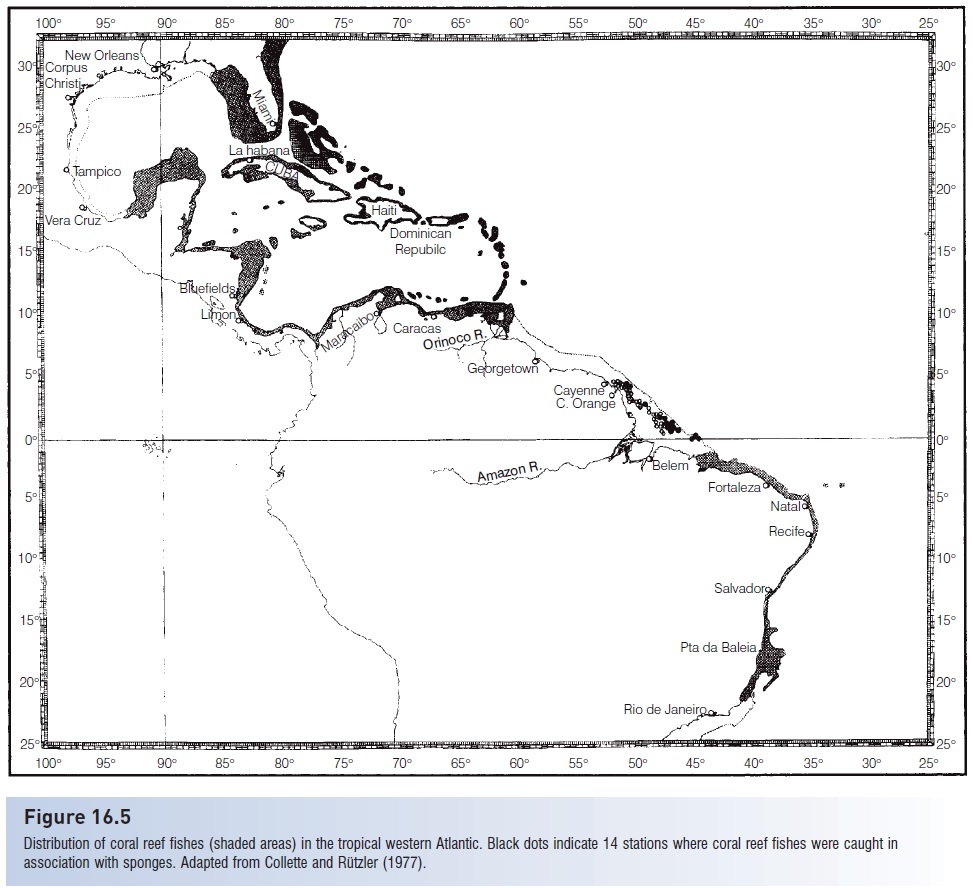Chapter: The Diversity of Fishes: Biology, Evolution, and Ecology: Zoogeography
Western Atlantic region - Marine zoogeographic regions fishes
Western Atlantic region
The western Atlantic region includes the temperate shores of North America, the Gulf of Mexico, the tropical shores of the Caribbean Sea, and the tropical and temperate shores of South America. Genetic data indicate that two islands, Ascension and St. Helena, once thought to be part of the eastern Atlantic actually show more similarities to Brazil in the western Atlantic. The radiation of tropical shore fishes
The fish fauna of the western Atlantic region comprises about 1200 species. This coral reef fish fauna is partially divided into northern and southern parts by the freshwater outflow of the Amazon River. Bottom trawling below the freshwater outflow of the Amazon River in 1975 closed part of the supposed “gap” in fish distributions (Collette & Rützler 1977). At 14 benthic stations off the mouth of the Amazon under the superfi cial freshwater layer, a typical reef fish fauna of 45 species was found, but these “coral reef ” species were associated with 35 species of sponges in water too turbid for coral growth (Fig. 16.5).

Figure 16.5
Distribution of coral reef fishes (shaded areas) in the tropical western Atlantic. Black dots indicate 14 stations where coral reef fishes were caught in association with sponges. Adapted from Collette and Rützler (1977).
Sponges provide the necessary structural habitat for “coral reef ” species, which allows genetic continuity between the two supposedly separated populations. However, shallower water species are separated by the fresh waters of the Amazon outflow (Floeter et al. 2008). Rocha et al. (2002) showed the variable effects of the Amazon outflow on three species of the surgeonfish genusAcanthurus. The Amazon outflow is a strong barrier to dispersal of A. bahianus, a modest barrier for A. coeruleus, and has no discernable effect on A. chirurgus, which has been collected on deep soft bottoms with sponge habitats under the Amazon outflow. Both A. bahianus and A. coeruleus live in shallower waters and are not as tolerant of silt as A. chirurgus.
Although many groups show their maximum diversity in the Indo-West Pacific, a few show maximum diversity in the Americas. Two-thirds of the species of toadfishes, Batrachoididae, occur in New World waters (Collette & Russo 1981). The most generalized subfamily, the Batrachoidinae, is worldwide. However, the two most specialized subfamilies, the luminous midshipmen (Porichthyinae) and the venomous toadfishes (Thalassophryninae), are restricted to the western Atlantic and eastern Pacific (plus a few freshwater species derived from Atlantic or Pacific marine species).
Related Topics